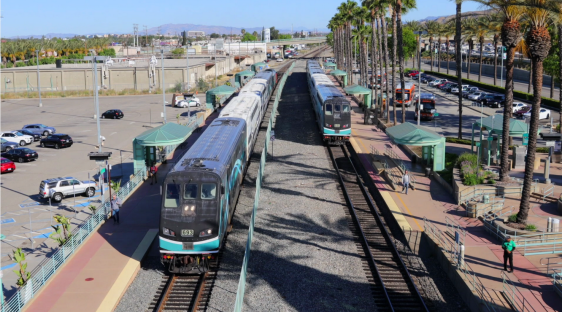After fighting to maintain reasonable funding levels in the transportation bill – and for the inclusion of dedicated transit funding in the first place – the Federal Transit Administration now finds itself up against almost certain funding cuts that imperil rail and bus expansion projects, as well as the agency's own staffing.
The fiscal cliff deal hasn’t answered many questions. Spending cuts of about 8 percent (the "sequester") could hit at the beginning of March. The current interim budget, or “continuing resolution,” expires at the end of March. And on top of all of that, another debt ceiling deadline is looming, and Republicans will certainly try to extract spending cuts again in exchange for raising it.
“None of us knows what’s going to happen,” said Sylvia Garcia, U.S. DOT deputy assistant secretary for management and budget, at the Transportation Research Board’s annual conference Wednesday. “No matter what happens, the message from Congress right now is, ‘You’re going to have less money to do what you need to do.’”
While the Federal Highway Administration’s staff is safe from layoffs from the sequester, since they’re funded out of the Highway Trust Fund, the FTA isn’t so lucky. General-funded FTA programs -- including the New Starts program for transit expansion, some research, and all FTA administration -- are still vulnerable to cuts. Worse, the “across-the-board” nature of the sequester means the FTA would have to apply the cuts evenly among those three areas.
Administrator Peter Rogoff told the TRB audience yesterday that he’ll move “heaven and earth” to keep people working, especially since the agency is already running on a bare-bones budget, and they’re “one person deep in a lot of critical areas.” He’s desperately trying to avoid furloughs, and he pledges to fill vacancies in important positions.
To make matters worse, the continuing resolution that was adopted in October didn’t take MAP-21’s modest funding increase into consideration. A continuing resolution simply extends the budget of the previous year, so the small amount that MAP-21 added to transportation funding – just enough to account for inflation since the last bill passed – isn’t available yet. (Notably, the increase in TIFIA loan funding isn’t affected by this problem.) That means, as Garcia said, that for the first six months of a two-year bill, transportation officials haven’t had access to some of the money they’re supposed to be spending.
That’s especially challenging for the FTA, which got new spending authority but no money to implement it.
MAP-21 was a “real breakthrough for public transportation,” according to Rogoff. After a pitched battle over whether transit would continue to have dedicated federal funding at all, the bill not only affirmed that it would, but also brought about “a great many significant policy changes in terms of the direction and role of FTA, many of them -- almost all of them -- sought by the Obama administration,” Rogoff said. Most significant among them is new transit safety oversight authority.
“Few people know it, but the Federal Transit Administration -- and UMTA [the Urban Mass Transportation Administration] before it -- was prohibited by law since 1964 from issuing even the most basic, common sense safety standards,” Rogoff said. “Right now we’re feeling like the barking dog that caught the truck. We’ve been barking for the last two years on the absolute necessity for Congress to give us that authority, we now have it, and we now have the challenge upon us to actually launch it.”
And given the very real possibility that the FTA could get its staffing slashed by the sequester, new authority with no new money could be a real problem. Already, the agency is taking cost-saving measures like conducting all of its MAP-21 outreach via webinar instead of in person.
Still, Rogoff is clearly enthusiastic about creating a new oversight mechanism, from scratch, in the best way possible. “We don’t want a new safety regime that just adds a lot of process and cost to transit agencies without a lot of value added in safety and riders’ experience.” He even took a jab at a sister agency, specifically saying he didn’t want to re-create the FRA’s (notoriously regulation-happy) rulebook.
Rogoff was also pleased that the House passed the Sandy emergency supplemental two days ago. It provides $10.9 billion of the $11.7 billion the president requested for relief from the worst disaster ever to hit the country's transit network, and is the first time the FTA will be utilizing the emergency relief authority MAP-21 conferred upon the agency. Some of that money is set aside for staffing, which could help cushion the blow of any cuts.






